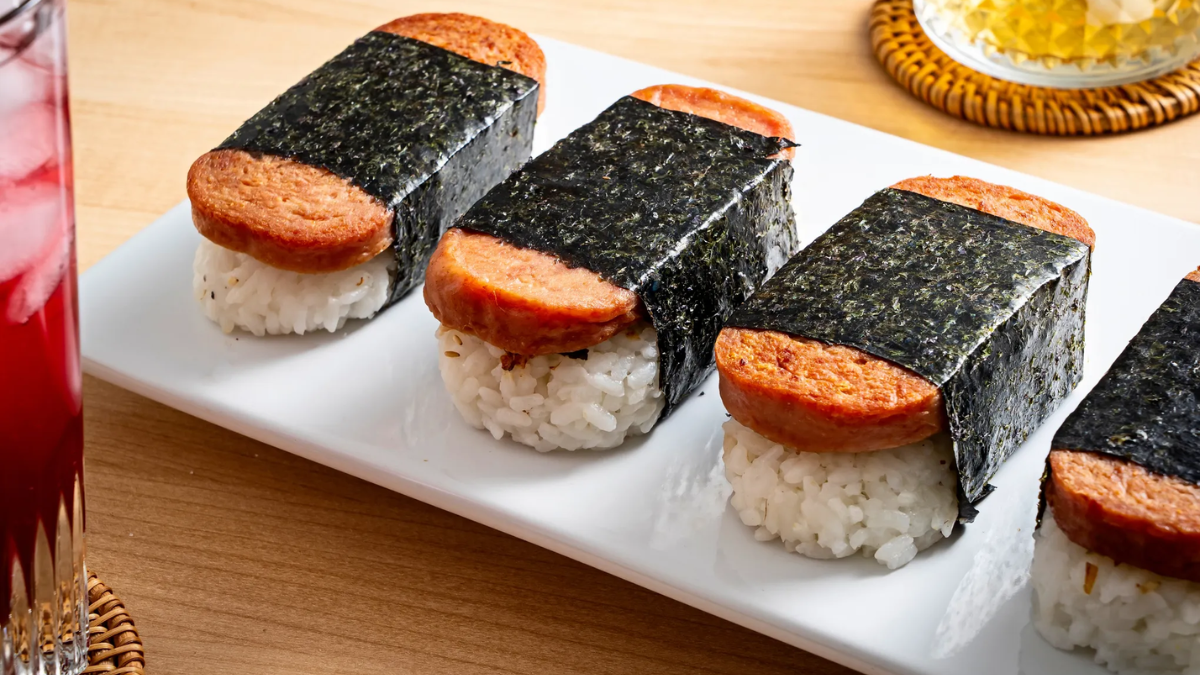
Advertisement
Spam Musubi Day Is Not Just a Trend—It’s a Tradition
Every August 8th, Spam Musubi Day rolls around quietly but powerfully. It’s not a federal holiday, there are no fireworks, and yet in homes, lunchboxes, and local delis across Hawaii—and increasingly, across the mainland U.S.—there’s a feeling of celebration. Why? Because Spam Musubi is more than just a snack.
It’s survival food turned cultural icon.
On the surface, it’s simple: a slice of Spam, fried golden, glazed with sweet soy sauce, and pressed onto warm rice before being wrapped in a strip of nori. But underneath that simplicity lies a deep story about migration, adaptation, colonization, creativity—and flavor.
Spam arrived in Hawaii during World War II, when food shortages led locals to embrace canned goods. Rather than eat it straight, Japanese and Filipino immigrants in Hawaii did what they do best—transform humble ingredients into soul food. The result was Spam Musubi, a Hawaiian twist on onigiri, and a new staple that filled bellies and bridged cultures.
For decades, Spam Musubi was mostly seen in Hawaii lunch plates and 7-Eleven counters. Now, thanks to food influencers, viral reels, and a renewed interest in comfort food with cultural roots, Spam Musubi has become a TikTok darling and foodie favorite worldwide.
But Spam Musubi Day isn’t just for influencers or nostalgia-seekers. It’s a chance to honor local knowledge, immigrant ingenuity, and the tastiness of necessity.
And this year, there’s more than one way to celebrate. From learning to make it yourself, to trying viral remix recipes, to reflecting on Hawaii’s food history, Spam Musubi Day is a reminder: good food doesn’t have to be fancy to be powerful.
Two Recipes to Celebrate Spam Musubi Day Properly
1. Classic Spam Musubi (The Traditional Way)
Ingredients:
-
1 can Spam (original or low sodium)
-
2 cups cooked short-grain rice
-
2 tbsp soy sauce (preferably Kikkoman)
-
2 tbsp sugar
-
1 tbsp mirin (optional)
-
2–3 sheets of roasted nori (seaweed)
Instructions:
-
Slice Spam into 8 pieces.
-
In a skillet, fry the Spam until golden brown on both sides.
-
In the same pan, combine soy sauce, sugar, and mirin. Return Spam to the pan and glaze both sides. Let it caramelize.
-
Place a Spam slice on a scoop of warm rice and shape it using your hands or a musubi mold.
-
Wrap it tightly with a strip of nori. Serve warm or wrap in wax paper for later.
Why it matters:
This is the OG. The version seen in every 7-Eleven in Oahu, made by every tutu (grandma), and beloved for its simplicity. It’s nostalgic, affordable, and endlessly comforting.
2. Spicy Mayo & Furikake Spam Musubi (Modern Remix)
Ingredients:
-
1 can Spam, sliced and pan-fried
-
2 cups cooked sushi rice
-
2 tbsp soy sauce
-
1 tbsp sugar
-
2 tbsp kewpie mayo
-
1 tsp sriracha
-
Furikake seasoning (rice seasoning blend)
-
Nori sheets
Instructions:
-
Fry and glaze Spam as usual.
-
Mix Kewpie mayo and sriracha to make spicy mayo.
-
Press rice into molds, sprinkle furikake generously on top, and lay glazed Spam on it.
-
Drizzle spicy mayo, wrap with nori, and optionally sear the sides for extra crunch.
Why it matters:
This version is trending on TikTok and found at foodie hotspots like Musubi Cafe Iyasume in Honolulu. It shows how tradition evolves and adapts—without losing its roots.
More Than a Snack: What Spam Musubi Day Represents in 2025
In a year where grocery prices are sky-high and fusion cuisine is mainstream, Spam Musubi is having a moment not because it’s cheap—but because it’s real. It’s born from necessity, yes, but also from cultural pride, survival, and identity.
For Hawaiians, it’s a piece of home. For Asian-American kids, it’s a nostalgic lunchbox memory. For the rest of us, it’s a reminder that some of the best food comes from people who had to make do with very little—and still made it delicious.
And now, in a time of performative wellness and overpriced “authentic” street food, Spam Musubi stands out as a humble, satisfying contrast. You can make it at home. You can pack it for work. You can celebrate it with friends. You can eat it with your hands.
Spam Musubi Day isn’t a corporate holiday—it’s grassroots. It’s community-led. It’s rooted in the small but powerful act of remembering where your food comes from.
And that’s worth celebrating—not just today, but every day you need a reminder that simplicity, culture, and flavor will always outlive the trends.
